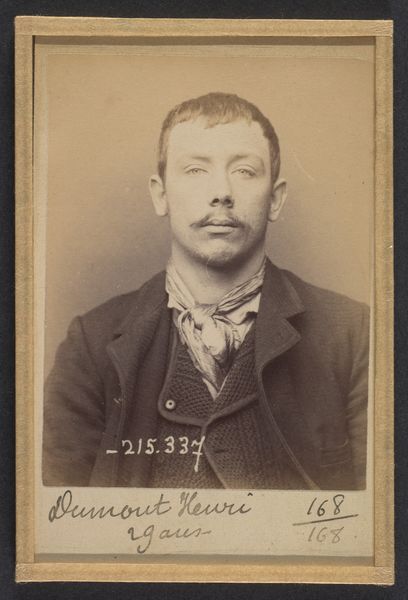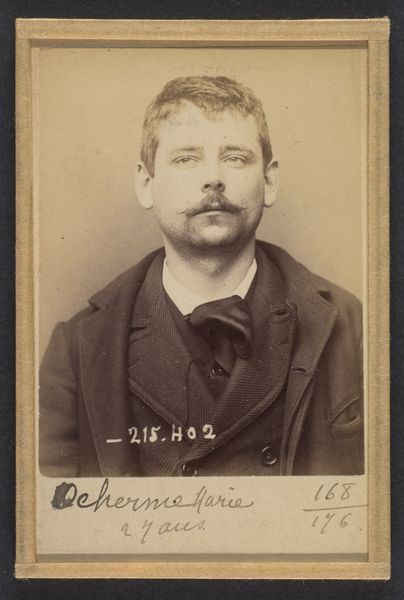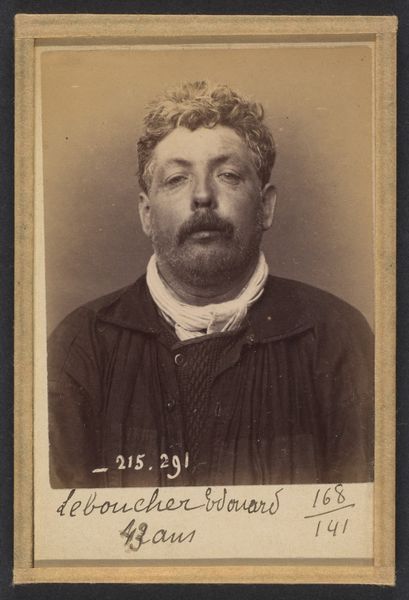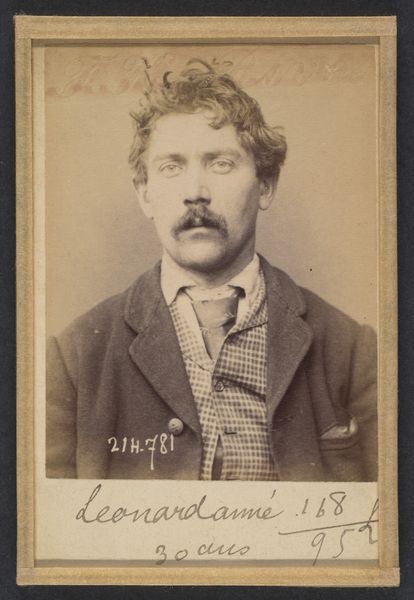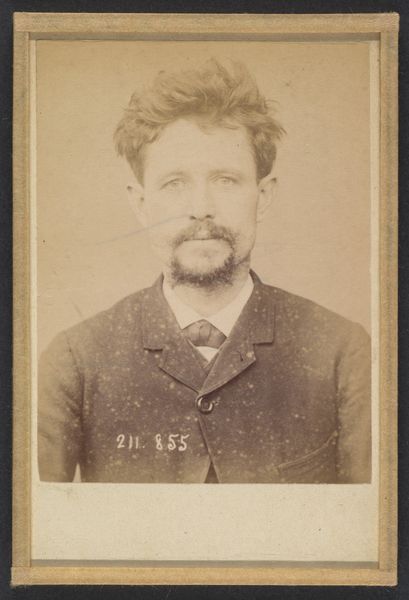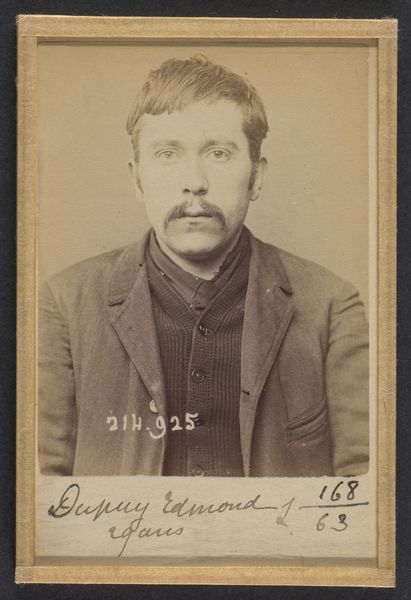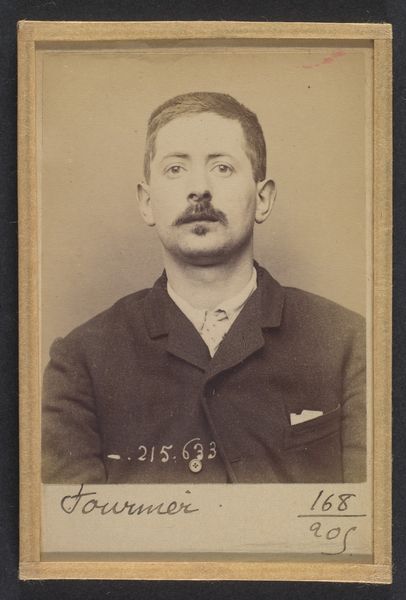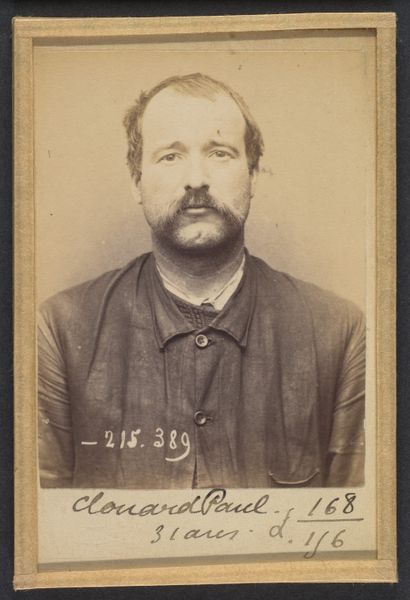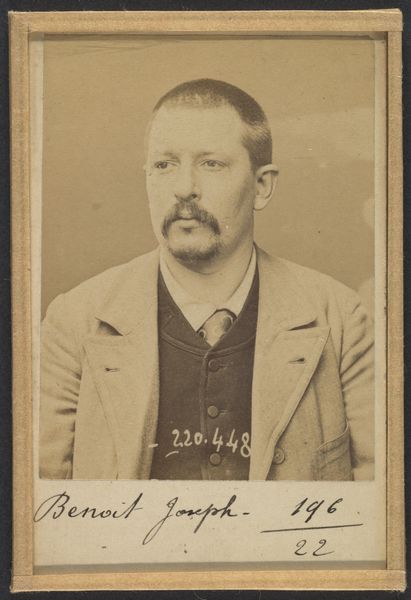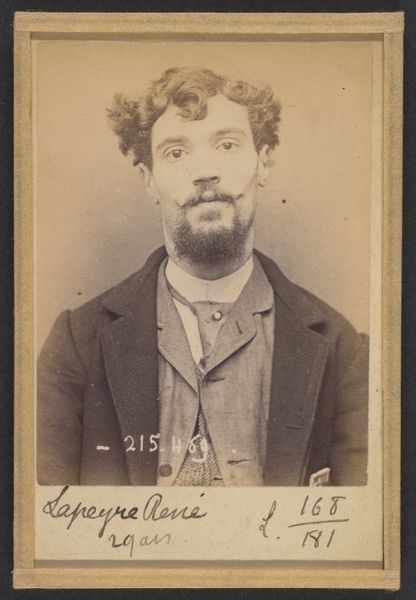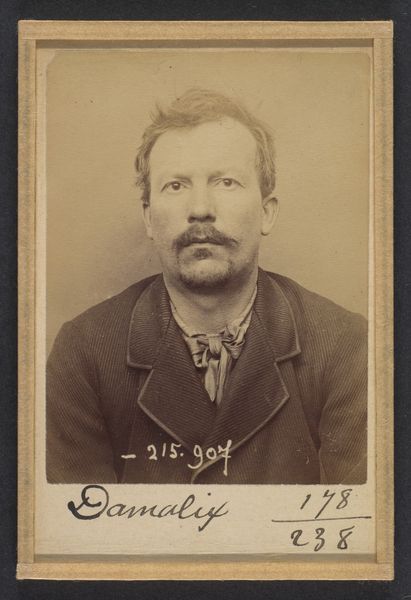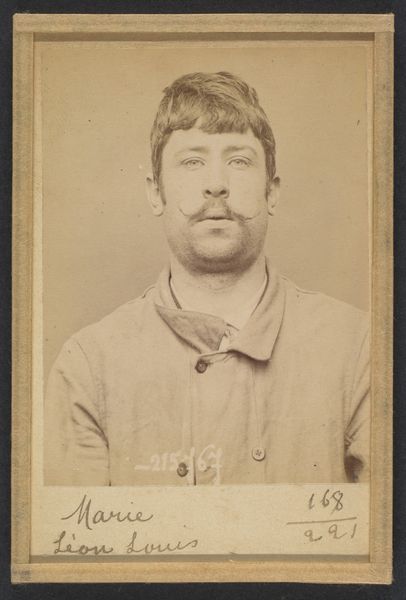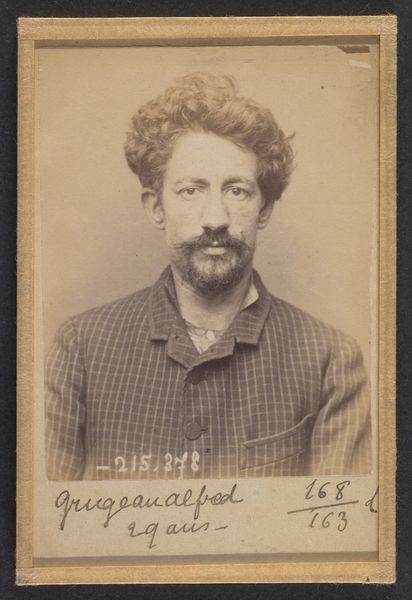
Sachet. Edmond. 27 ans, né à Mézières (Ardennes). Typographe. Anarchiste. 1/3/94. 1894
0:00
0:00
photography, gelatin-silver-print
#
portrait
#
social-realism
#
photography
#
gelatin-silver-print
#
academic-art
Dimensions: 10.5 x 7 x 0.5 cm (4 1/8 x 2 3/4 x 3/16 in.) each
Copyright: Public Domain
Curator: Let's delve into this captivating gelatin-silver print titled "Sachet. Edmond. 27 ans, né à Mézières (Ardennes). Typographe. Anarchiste. 1/3/94.," a piece attributed to Alphonse Bertillon, created in 1894. Editor: The immediate impression is haunting. The muted tones, the direct gaze—it feels less like a portrait and more like evidence. A stark visual record of someone deemed a threat to the established order. Curator: Precisely. Bertillon was a pioneer in using photography for criminal identification. This image isn’t just a portrait; it’s part of a broader system of surveillance and control aimed at marginalized groups, specifically anarchists during a period of intense political upheaval. Consider the sitter's profession—a typographer, someone skilled in disseminating ideas, deemed dangerous enough to warrant this level of scrutiny. Editor: The figure’s eyes speak volumes, hinting at the burdens he bears, reflecting social strife that led him into political extremism, but he is humanized, and vulnerable to forces far greater than himself. I note the number across his chest. Even his own identity is subsumed into bureaucratic inventory. How might Edmond's image of himself, I wonder, contend with this objectified and constrained representation? Curator: It’s crucial to remember Bertillon's work must be situated in a wider culture of state-sponsored discrimination during France's fin-de-siècle. Images like these reinforced stereotypes and aided in suppressing dissent. Think of the ways identity gets weaponized and what happens to social perceptions of marginalized individuals. Editor: There's a powerful visual language at play—a standardized frame, regulated lighting, and the very act of recording itself—to reinforce established perceptions. It is both document and symbol. And there lies both its power and limitations as historical and cultural artifact. Curator: Ultimately, "Sachet. Edmond…" encourages critical questions about the relationship between power, identity, and visual representation—questions that remain deeply relevant today. Editor: Indeed. The weight of that gaze persists across the decades, reminding us that we must view the present as it exists and grapple with injustices encoded in such relics.
Comments
No comments
Be the first to comment and join the conversation on the ultimate creative platform.
